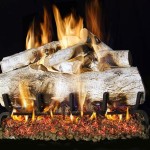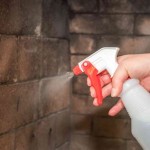Jøtul Wood Fireplace Insert: A Comprehensive Guide
A wood-burning fireplace insert is an appliance designed to be installed within an existing masonry fireplace opening. The primary purpose of an insert is to transform an inefficient, often drafty, open fireplace into a more efficient and controllable heat source. Jøtul, a Norwegian manufacturer with a long history of producing high-quality cast iron stoves and fireplace inserts, offers a range of models designed to meet varying heating needs and aesthetic preferences. This article provides a detailed examination of Jøtul wood fireplace inserts, exploring their key features, benefits, installation considerations, and maintenance requirements.
Jøtul's reputation is built on durable construction, efficient combustion technology, and timeless design. Their inserts are crafted primarily from cast iron, a material known for its exceptional heat retention and ability to withstand high temperatures. This robust construction contributes to the longevity of the insert and its ability to radiate heat evenly into the surrounding space. Furthermore, Jøtul incorporates advanced combustion systems into their inserts, designed to maximize heat output while minimizing emissions, ensuring compliance with environmental regulations.
Key Features and Benefits of Jøtul Wood Fireplace Inserts
Jøtul wood fireplace inserts offer a multitude of features and benefits that make them a desirable option for homeowners seeking to improve the efficiency and aesthetics of their existing fireplaces. These advantages extend beyond simple heat production, encompassing environmental considerations, convenience, and overall home comfort.
Superior Heating Efficiency: One of the most significant advantages of a Jøtul wood fireplace insert is its significantly improved heating efficiency compared to an open fireplace. Open fireplaces typically lose a substantial amount of heat up the chimney, often more than 80%. Jøtul inserts, on the other hand, are designed to capture and radiate heat into the room, achieving efficiencies that can exceed 70% depending on the model and burning conditions. This increased efficiency translates directly into lower fuel consumption and reduced heating costs.
Controlled Combustion and Burn Time: Jøtul inserts feature sophisticated air control systems that allow users to regulate the rate of combustion. This control enables precise adjustment of heat output and extends burn times. By carefully managing the air supply, homeowners can achieve longer, more consistent burns with fewer reloads, maximizing convenience and minimizing the need for frequent refueling. The controlled combustion also contributes to cleaner burning, reducing smoke and emissions.
EPA Certification: Jøtul wood fireplace inserts are designed and tested to meet the stringent emission standards set by the Environmental Protection Agency (EPA). EPA certification ensures that the insert burns cleanly and efficiently, reducing its environmental impact and improving air quality. This certification is crucial for homeowners seeking to minimize their carbon footprint and comply with local regulations related to wood-burning appliances.
Durable Cast Iron Construction: The majority of Jøtul inserts are constructed from high-quality cast iron, a material prized for its durability and heat-retaining properties. Cast iron is capable of withstanding the extreme temperatures associated with wood burning without warping or cracking. Its inherent mass allows it to absorb and radiate heat evenly over extended periods, providing a more consistent and comfortable heating experience. The robust construction of Jøtul inserts contributes to their long lifespan and minimal maintenance requirements.
Aesthetic Appeal and Design Options: Jøtul offers a diverse range of insert designs to complement various architectural styles and interior decors. From classic, traditional designs to modern, minimalist aesthetics, there is a Jøtul insert to suit almost any taste. Many models feature large viewing windows that provide an unobstructed view of the fire, enhancing the ambiance of the room. The decorative elements and finishes are carefully crafted to create a visually appealing focal point.
Safety Features: Jøtul prioritizes safety in the design of its wood fireplace inserts. Features such as tightly sealed doors, insulated fireboxes, and spark screens help to prevent the escape of embers and smoke into the living space. These safety features contribute to a safer and more enjoyable wood-burning experience, minimizing the risk of fire hazards and ensuring compliance with safety standards.
Installation Considerations for Jøtul Wood Fireplace Inserts
Proper installation is paramount to the safe and efficient operation of a Jøtul wood fireplace insert. It is strongly recommended that installation be performed by a qualified and certified professional, such as a NFI (National Fireplace Institute) certified installer. This ensures compliance with local building codes, manufacturer’s instructions, and safety regulations. Several key factors must be considered during the installation process.
Chimney Inspection and Preparation: Before installing a Jøtul insert, the existing chimney must be thoroughly inspected to ensure it is structurally sound and free from obstructions. A professional chimney sweep should clean and inspect the chimney flue to remove any creosote buildup, which is a highly flammable byproduct of wood combustion. In many cases, a stainless-steel chimney liner is required to be installed within the existing masonry chimney. This liner provides a dedicated flue for the insert, preventing the escape of combustion gases and improving draft. The liner size must be compatible with the insert model to ensure proper venting.
Insert Sizing and Fireplace Opening Dimensions: Selecting the appropriate insert size is crucial for optimal performance. The insert's heating capacity should be matched to the size of the room being heated. Jøtul provides specifications for each model, including heat output (BTUs) and recommended heating area. The dimensions of the existing fireplace opening must also be carefully measured to ensure that the chosen insert will fit properly. Some inserts may require modifications to the fireplace opening, such as reducing the height or width, to achieve a proper seal and prevent air leakage.
Hearth Protection: State and local building codes typically require adequate hearth protection in front of and to the sides of the fireplace opening. This protection, often in the form of non-combustible materials such as brick, stone, or tile, prevents sparks and embers from igniting nearby combustible materials. The specific hearth protection requirements vary depending on the insert model and local regulations. It is essential to consult with a qualified installer or building inspector to determine the appropriate level of hearth protection.
Connecting to Existing Chimney: Connecting the insert to the chimney liner is a critical step in the installation process. The connection must be airtight to prevent the escape of combustion gases into the living space. A block-off plate, often made of steel or aluminum, is typically installed at the base of the chimney to seal off the fireplace opening and prevent drafts. The block-off plate also supports the chimney liner and ensures that combustion gases are properly directed up the chimney.
Clearances to Combustibles: Maintaining proper clearances between the insert and any nearby combustible materials, such as walls, mantels, and furniture, is essential for fire safety. These clearances are specified by the manufacturer and must be strictly adhered to. Insufficient clearances can lead to overheating and potentially cause a fire. In some cases, heat shields may be required to reduce clearances to combustible materials.
Maintenance and Operation of Jøtul Wood Fireplace Inserts
Regular maintenance is essential for ensuring the safe and efficient operation of a Jøtul wood fireplace insert. Proper operation and maintenance practices will not only prolong the lifespan of the insert but also minimize the risk of fire hazards and maximize heating efficiency.
Regular Chimney Sweeping: A professional chimney sweep should inspect and clean the chimney at least once a year, or more frequently if heavy use is anticipated. This removes creosote buildup, which is a highly flammable substance that can accumulate in the chimney flue over time. Creosote buildup increases the risk of chimney fires, which can be extremely dangerous. Regular chimney sweeping is a critical safety measure.
Ash Removal: Ash should be removed from the firebox regularly to maintain optimal combustion and prevent ash buildup around the air inlets. Ash buildup can restrict airflow and reduce the efficiency of the insert. Use a metal shovel and container to remove ashes and dispose of them properly in a non-combustible container. Never store ashes indoors near combustible materials.
Door Gasket Inspection and Replacement: The door gasket is a crucial component that seals the door tightly against the firebox, preventing air leakage and ensuring controlled combustion. Inspect the door gasket regularly for signs of wear or damage. If the gasket is cracked, brittle, or no longer sealing properly, it should be replaced to maintain optimal performance and prevent air leakage.
Air Inlet Inspection and Cleaning: The air inlets are responsible for supplying air to the firebox for combustion. Inspect the air inlets regularly for obstructions, such as ash or debris. Clean the air inlets as needed to ensure proper airflow and efficient combustion. Restricted airflow can lead to incomplete combustion and increased smoke emissions.
Wood Storage and Selection: Burning seasoned, dry wood is essential for efficient and clean combustion. Wet or green wood produces excessive smoke and creosote, reducing the efficiency of the insert and increasing the risk of chimney fires. Store wood in a dry, well-ventilated area to allow it to season properly. Hardwoods, such as oak and maple, typically provide longer burn times and higher heat output than softwoods, such as pine.
Safe Operation Practices: Always follow the manufacturer's instructions for operating the Jøtul wood fireplace insert. Use only approved fuels and never burn trash, paper, or other materials that can produce excessive smoke and emissions. Never leave the insert unattended while it is burning, and keep flammable materials away from the insert. Install and maintain smoke detectors and carbon monoxide detectors in the home to provide early warning in case of a fire or carbon monoxide leak.

Wood Fireplace Inserts Jotul Mountain West S

Wood Fireplace Inserts Jotul Mountain West S

Jotul Wood Inserts Main Street Fireplace Fall

Do You Have An Old Fireplace Insert Or Stove Jotul

Fireplace Inserts The Cure For Cold Fireplaces Jøtul

C 550 Rockland Cb Cf Traditional

Jotul C550 Series Fireplace Insert Vancouver Gas Fireplaces

Jotul

JØtul I 18 Panorama Wood Inserts Traditional

Wood Fireplace Inserts Jotul Mountain West S
Related Posts








